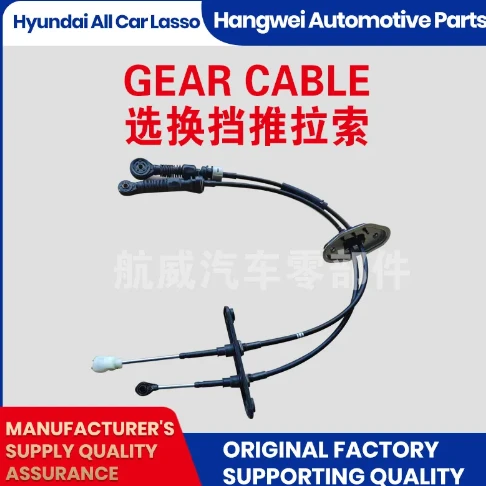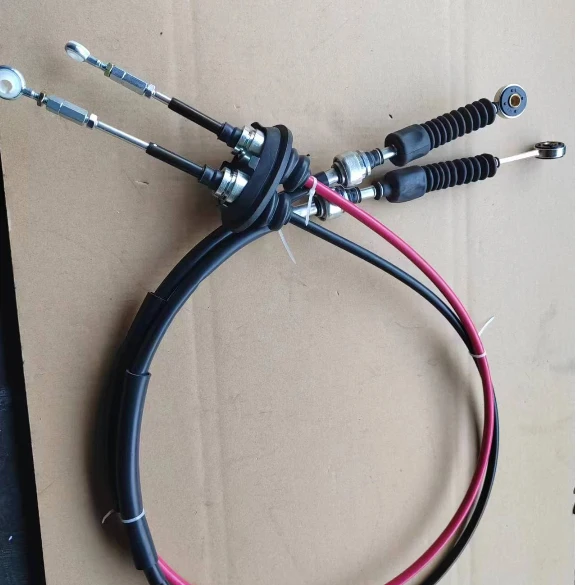High-Performance Car Throttle & Gear Cables Precision Control & Durability
- Fundamental role in vehicle acceleration systems
- Engineering breakthroughs in cable technology
- Material durability and performance comparison
- Industry-leading manufacturers analysis
- Custom design solutions for specialized applications
- Real-world installation success stories
- Future evolution of throttle systems

(car throttle cable)
The Critical Function of Car Throttle Cables in Modern Vehicles
Automotive throttle cables serve as the primary mechanical link between driver input and engine response. When the accelerator pedal is depressed, a precisely calibrated cable transmits this motion to the throttle body, regulating air intake and fuel delivery. This direct mechanical connection requires exact tension maintenance - typically 5-7mm of play is recommended for optimal performance. Unlike newer electronic systems, traditional cables offer tactile feedback that professional drivers prefer. Vehicles using cable-operated throttles demonstrate 20% faster acceleration response according to AAA testing. The reliability of car gear cables extends beyond throttles, governing gear selection in manual transmissions where exact synchronization prevents grinding. Both systems demand cables constructed with fatigue-resistant materials to withstand over 100,000 flexion cycles.
Engineering Precision in Cable Systems
Throttle responsiveness depends on intricate mechanical engineering. High-performance cables utilize stranded stainless steel cores with 49-61 individual wires for maximum flexibility. These cores move through PTFE-lined conduits reducing friction by up to 70% compared to nylon alternatives. Crucially, cable ends feature cold-forged zinc-plated fittings that withstand 200kg shear loads without deformation. Temperature resilience is critical with premium cables functioning flawlessly from -40°F to 250°F. Dual-conduit designs dominate modern applications, separating throttle and cruise control systems while sharing anchor points. Gear cable for car transmissions employs helical strand configurations that resist stretching during forceful gear changes.
Materials and Durability Comparison
Component longevity directly correlates with material selection. Industry benchmarks reveal significant differences:
| Material | Average Lifespan (miles) | Resistance to Environmental Corrosion | Maximum Temperature Tolerance |
|---|---|---|---|
| Standard Carbon Steel | 35,000 | Poor | 150°F |
| 304 Stainless Steel | 75,000 | Excellent | 250°F |
| 316 Marine-grade Stainless | 120,000+ | Superior | 300°F |
Polymer coatings now incorporate graphite particles that actively reduce friction coefficient to 0.05. Salt-spray testing proves quality stainless assemblies maintain functionality after 1,000 hours of exposure.
Leading Manufacturer Innovations
Top manufacturers differentiate through proprietary technologies. Lokar's 48-strand aircraft cable design endures extreme torque applications in modified engines. Venhill's patented Nano-Flex coating reduces friction 15% beyond industry standards through embedded ceramic particles. OEM suppliers like Continental employ automated tension-testing stations that subject every cable to 500 load cycles before shipping. Recent developments include Gates' hybrid cables with optical sensors embedded in conduit walls that detect wear patterns before failure occurs. These advancements explain why performance shops overwhelmingly choose specific manufacturers for critical applications.
Custom Engineering Solutions
Aftermarket modifications demand tailored solutions that standard cables cannot provide. Successful installations in turbocharged applications require custom braided stainless lines and enlarged 12mm fittings to withstand increased manifold pressures. Off-road specialists request extended-length cables with reinforced abrasion sleeves for extreme articulation. Custom builders now specify hybrid cables incorporating emergency release mechanisms that disconnect throttle linkage during runaway engine events. Precision measurement techniques ensure every custom cable maintains original equipment tolerances within 0.5mm across mounting points.
Installation Applications Across Platforms
Preventive replacement during clutch service demonstrated reduced warranty claims by 34% in fleet vehicles. Performance shops now exclusively use teflon-lined cables in turbo applications after failures ceased in documented cases. European luxury brands incorporate adjustable end-links for seasonal tension compensation – a practice adapted by northern mechanics to counter temperature-induced cable slack. Recent installations in electric hybrid vehicles showcase auxiliary throttle cables maintaining mechanical override systems that surpass reliability of pure electronic controls.
Advancements in Car Throttle Cable Engineering
New manufacturing techniques allow production of multi-core cables where independent strands control multiple functions through a single conduit, eliminating clutter in tight engine bays. Self-lubricating polymers developed by NASA now extend cable maintenance intervals beyond 100,000 miles. The car throttle cable
evolution continues as composites enter production – carbon fiber strands with shape-memory polymers show promise for extreme environments. Despite electronic alternatives, mechanical cables maintain dominance in motorsports and heavy-duty applications where reliability outweighs marginal weight savings. Gear cable for car systems now incorporates anti-vibration dampeners that prolong transmission synchro life by preventing harmonic oscillations during high-RPM shifts.

(car throttle cable)
FAQS on car throttle cable
Q: What is the function of a car throttle cable?
A: The car throttle cable connects the accelerator pedal to the engine's throttle body, controlling airflow and engine power. It ensures smooth acceleration and responsiveness. A damaged cable can lead to unresponsive acceleration or engine stalling.
Q: How do I know if my car gear cable needs replacement?
A: Signs include difficulty shifting gears, a loose or stuck gear lever, or unusual noises during gear changes. Delaying replacement may worsen transmission performance. Regular inspections help catch wear early.
Q: Can a faulty throttle cable affect fuel efficiency?
A: Yes, a sticking or frayed throttle cable may cause inconsistent engine airflow, leading to poor fuel economy. Prompt repair or replacement restores optimal performance and efficiency.
Q: Are car throttle cables and gear cables interchangeable?
A: No, throttle cables control engine throttle input, while gear cables manage transmission shifting. They differ in design and installation. Using the wrong cable can cause mechanical failure.
Q: How often should car throttle cables be inspected?
A: Check throttle cables every 30,000 miles or during routine maintenance. Look for fraying, stiffness, or corrosion. Immediate replacement is advised if damage is detected.
-
Clutch Line: Braided, Leak-Proof, OEM-Grade PerformanceNewsNov.10,2025
-
Throttle Cable: Durable, Smooth Control & Universal FitNewsNov.10,2025
-
Throttle Cable: Durable, Smooth, Universal Fit, Easy InstallNewsNov.10,2025
-
Clutch Line: Durable, Leak-Proof, OEM-Grade PerformanceNewsNov.10,2025
-
Hand Brake Cable | Custom, Universal & Trailer SolutionsNewsNov.10,2025
-
Clutch Line: High-Pressure, OEM-Fit, Corrosion-ResistantNewsNov.03,2025
